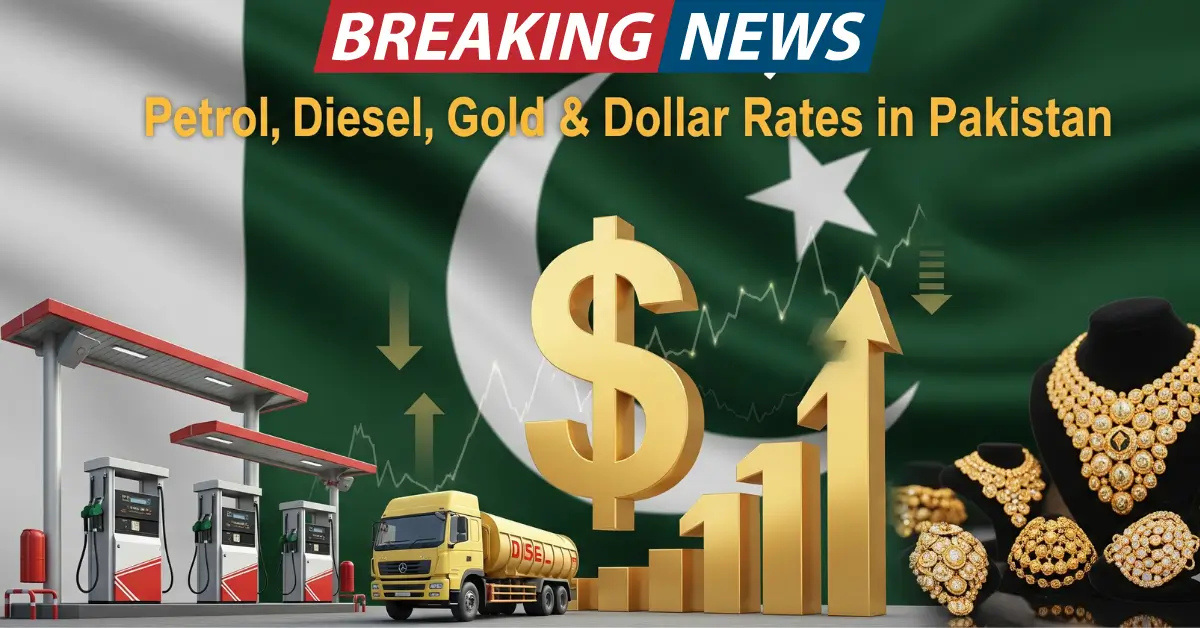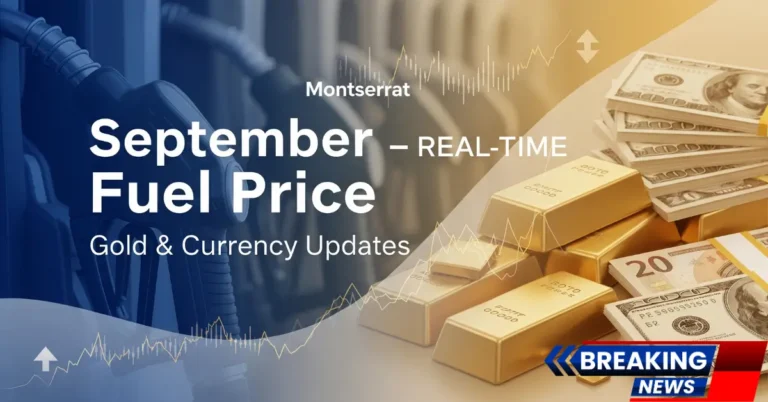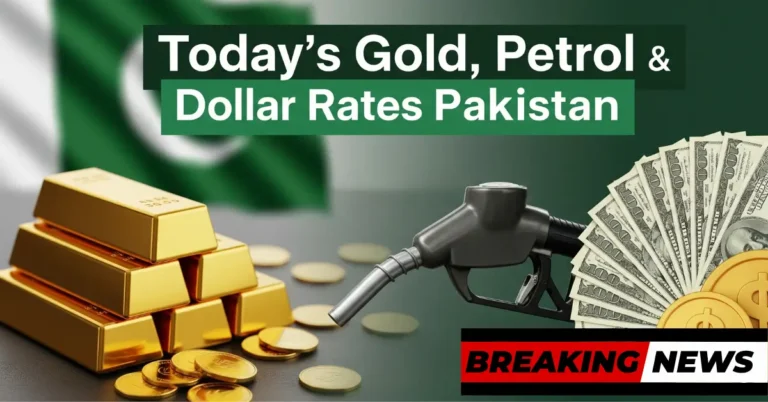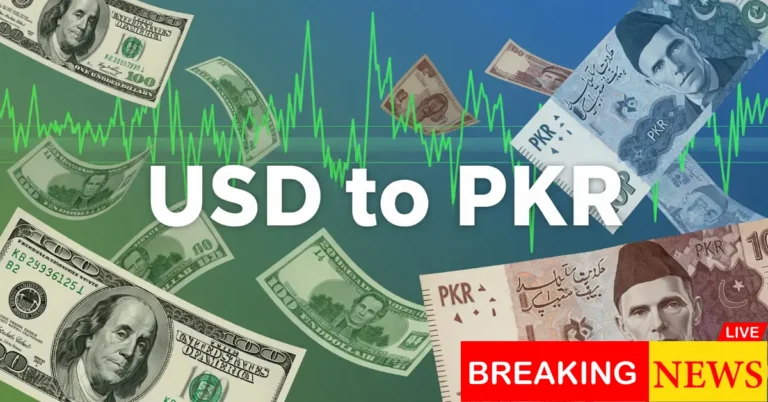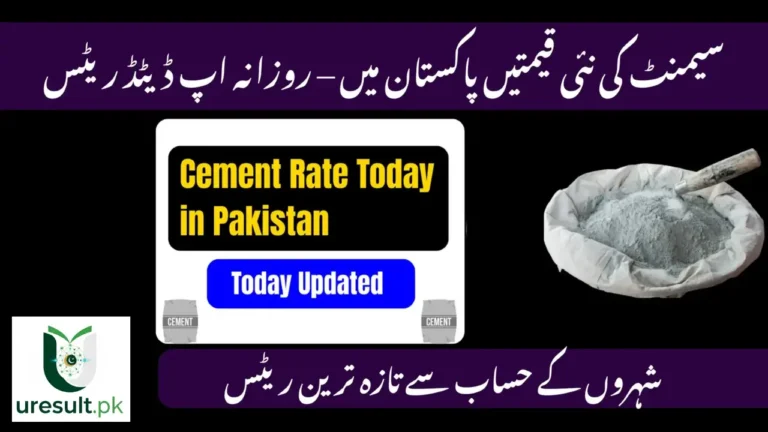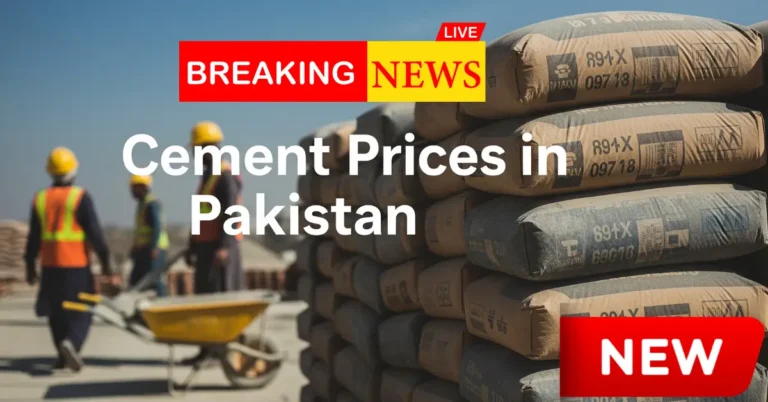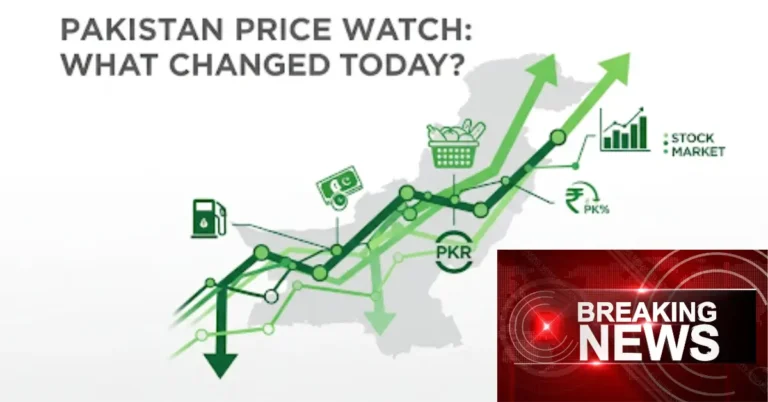In Pakistan’s ever-changing economic landscape, the daily costs of petrol, diesel, gold, and the dollar aren’t just abstract figures—they influence nearly every aspect of life. From commuting to saving, shopping to investing, these rates impact the cost of living in a way few other indicators do. For both households and businesses, staying informed about these prices has become essential.
Among these, Dollar Rates in Pakistan have emerged as one of the most critical factors affecting national and personal finances. When the dollar rises, it pushes up the price of imports, raises inflation, and puts pressure on fuel prices and essential goods. Meanwhile, gold remains a traditional store of value, and petrol and diesel continue to shape the price of logistics and transportation.
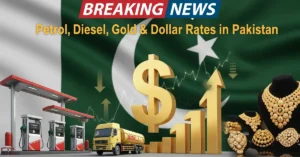 Also read
Also read
Fuel Prices
The price of fuel is one of the most visible signs of inflation. In recent months, petrol and diesel prices have shown sharp upward trends. This is largely due to higher international oil prices, rising freight charges, and the ongoing depreciation of the Pakistani rupee.
| Commodity | Price (PKR per liter) | Trend | National Impact |
|---|---|---|---|
| Petrol (Super) | 305.36 | Increasing | Affects travel, transport |
| High-Speed Diesel | 311.84 | Increasing | Raises food & goods prices |
These rates are reviewed bi-monthly, and even a minor shift in Dollar Rates can lead to sudden changes in fuel pricing, as oil imports are dollar-denominated.
The Ripple Effect of Diesel Prices
Diesel plays a broader economic role than petrol. It powers trucks, buses, agricultural equipment, and even factories. When diesel prices increase, the entire supply chain becomes more expensive. Food transportation, public transport, and construction materials, costs all go up, tightening margins for businesses and hitting consumer wallets.
With limited energy alternatives available in rural areas, higher diesel prices are especially hard on farmers and small-scale producers, creating a multiplier effect on inflation across the economy.
 Also read
Also read
Why Gold Prices Are Closely Watched
Gold holds a deep cultural and financial significance in Pakistan. It’s often bought during weddings, stored as emergency savings, or used to protect wealth from currency instability. Over the past year, gold prices have remained elevated due to persistent economic uncertainty and inflation.
However, when Dollar Rates rise, they often lift gold prices as well. That’s because both dollar and gold the move in tandem with global investor sentiment. When the dollar strengthens, import costs for gold rise, pushing up local rates—even if international prices remain stable.
Understanding Dollar Rates in Pakistan
The strength of the US dollar against the Pakistani rupee is more than just a headline—it’s a direct indicator of economic pressure. Dollar Rates in Pakistan affect import costs, external debt repayments, and overall inflation. When the rupee weakens, it makes everything from crude oil to all kinds of mobile phones more expensive.
Currently, the dollar is trading close to Rs. 295.50. This rising trend reflects underlying concerns about low foreign reserves, growing trade deficits, and the challenges of meeting international loan conditions. For businesses that rely on imports or deal with foreign clients, fluctuations in the dollar rate can dramatically shift profit margins and pricing strategies.
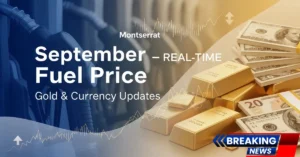 Also read
Also read
Gold vs. Dollar: Where to Hedge Your Wealth
With inflation and economic instability making long-term planning difficult, many Pakistanis are turning to traditional hedges like gold or foreign currency holdings. Gold is seen as a safer, tangible asset, while some investors and families now prefer to save in dollars as a way to preserve value.
Still, both options come with risks. If Dollar Rates continue to rise too rapidly, it may trigger tighter monetary controls, making it harder for average citizens to access or save in foreign currency. Gold, on the other hand, may not be as liquid during urgent financial needs.
Latest Market Snapshot
Here’s a brief summary of the latest economic indicators:
| Category | Current Rate | Trend | Key Impact |
|---|---|---|---|
| Petrol | Rs. 305.36/liter | Increasing | Higher commute costs |
| Diesel | Rs. 311.84/liter | Increasing | Expensive logistics & farming |
| Gold (24K) | Rs. 241,700/tola | Stable | Safe haven for savings |
| US Dollar | Rs. 295.50 | Rising | Affects all import prices |
These figures will likely continue to fluctuate as international oil markets shift and local economic policy evolves.
Conclusion
Keeping a close watch on petrol, diesel, gold, and especially Dollar Rates in Pakistan is more important now than ever. Each of these indicators affects personal budgets, business operations, and long-term financial security. Whether you’re planning a monthly budget or looking to invest, the trends in these key areas should guide your decisions.
As the economy navigates inflation, currency pressure, and global market uncertainty, staying informed isn’t just smart—it’s necessary.
 Also read
Also read
